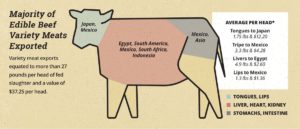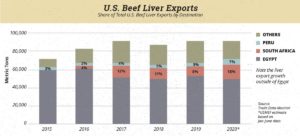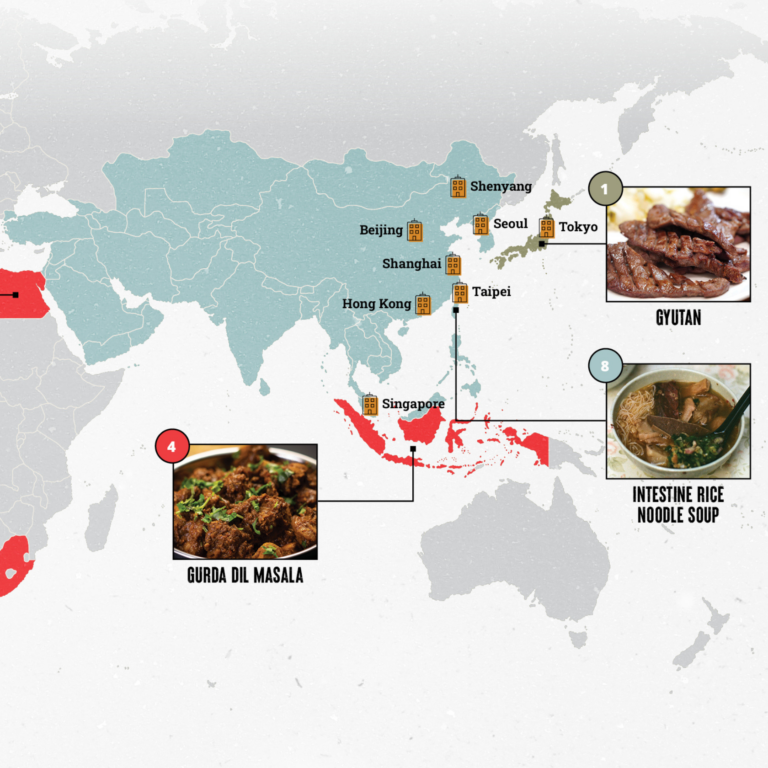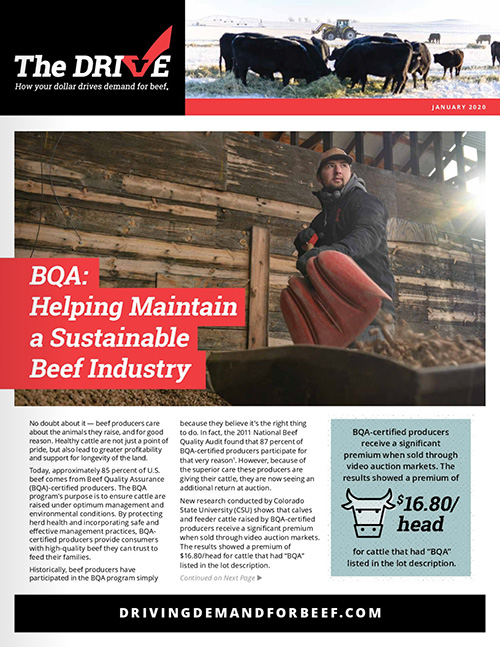
Finding Value in Variety Meats
Prime rib, ribeye, brisket and tenderloin – all popular, high-value beef cuts Americans naturally reach for. But what about those cuts that don’t fit into the typical taste preferences of consumers in the U.S. – what happens to them?
There’s very minimal demand for beef variety meats like tongue, lips, liver, heart, kidney, stomach and intestine here in the U.S. Still, across the world, international consumers are eager to get their hands on these U.S. beef products – and they’re willing to pay a premium for them.
Receiving Top Dollar
To get those premium prices, the U.S. Meat Export Federation (USMEF), a contractor to the Beef Checkoff, creates and shares innovative ways to serve and eat U.S. variety meats, then markets those meats to the proper audiences across the world. Because of their efforts, the U.S. is the world’s largest exporter of edible beef variety meat.
USMEF works to capitalize on international taste preferences and add value back per head for the U.S. producer. For example, beef tripe, the lining of a cow’s stomach, while not particularly popular in the U.S., is commonly used to flavor soups like Menudo in Mexico. U.S. tripe exports to Mexico equated to $4.28 per head of fed cattle slaughter in 2019 and reached more than $111.7 million in revenue. This was up 30 percent from 2018 1.
In Japan, the dominant destination for U.S. beef tongue, a major beef bowl restaurant chain, Yoshinoya, recently launched its first-ever dish featuring U.S. beef tongue at a price of about $8. Growing demand for this product in Japan contributed to 2019 exports of U.S. beef tongue, equating to $12.20 per head of fed slaughter2.
USMEF also works to expand these products into a wider range of markets. In recent years, U.S. beef liver exports have become more diversified. Egypt has long been the leading destination for U.S. beef livers, but liver exports have relied less on Egypt as demand for the product in Sub-Saharan Africa, Latin America and Asia has grown. USMEF executes campaigns that help elevate the growing popularity of this product in these markets.
 For example, in Peru, USMEF launched an initiative to promote the benefits of U.S. beef liver in helping combat anemia. This project included medical students greeting consumers in butcher shops and supermarkets to share information about healthy eating habits and how consuming beef liver increases iron intake. The motivation for this campaign came from a Peruvian Health Ministry report that revealed anemia cases in Peru have risen in recent years due to iron-deficient diets, with the country’s national anemia rate in children at a startling 47 percent. This campaign was a massive success. Arisa, a distributor that deals mostly with wet markets in Lima, Peru, experienced a 23 percent increase in U.S. beef liver sales during the promotion. Grupesac, a retailer with two outlets where U.S. beef liver accounts for 60 percent of total sales, saw a 22 percent increase3. This campaign is just one example of how USMEF is boosting U.S. beef liver consumption in international markets.
For example, in Peru, USMEF launched an initiative to promote the benefits of U.S. beef liver in helping combat anemia. This project included medical students greeting consumers in butcher shops and supermarkets to share information about healthy eating habits and how consuming beef liver increases iron intake. The motivation for this campaign came from a Peruvian Health Ministry report that revealed anemia cases in Peru have risen in recent years due to iron-deficient diets, with the country’s national anemia rate in children at a startling 47 percent. This campaign was a massive success. Arisa, a distributor that deals mostly with wet markets in Lima, Peru, experienced a 23 percent increase in U.S. beef liver sales during the promotion. Grupesac, a retailer with two outlets where U.S. beef liver accounts for 60 percent of total sales, saw a 22 percent increase3. This campaign is just one example of how USMEF is boosting U.S. beef liver consumption in international markets.
All of these specialized campaigns, like the U.S. beef liver campaign in Peru, are funded by the Beef Checkoff and executed by USMEF staff members worldwide. At USMEF’s 16 international offices, local staff, who live their day-to-day lives in these specific countries, are already integrated into the national culture and help strategize and execute campaigns that fit their country’s needs and preferences. By understanding the language, food preferences and shopping habits, these local team members allow a “boots-on-the-ground” approach. This helps USMEF be relevant and efficient when marketing U.S. variety meats to global consumers.
 Adding Value Back to Producers
Adding Value Back to Producers
These efforts to promote U.S. variety meats ultimately do contribute to producer success here at home. The Beef Checkoff meets the desires of consumers across the world by providing them with the beef cuts and products they most want to purchase. In turn, global competition for these cuts contributes to producers getting the best prices possible and boosts demand for cattle. In 2019, U.S. variety meat exports contributed to more than 27 pounds per head of fed slaughter. This resulted in a per-fed-head value of $37.27 4.
With strong, effective programs and other efforts in place to grow worldwide U.S. variety meat demand, the Beef Checkoff is contributing to the advancement and strength of the industry, both here and abroad.
- Data compiled by the U.S. Meat Export Federation
- Data compiled by the U.S. Meat Export Federation
- Data compiled by the U.S. Meat Export Federation
- USMEF 2019 estimates using NASS fed slaughter per head conversions.
The Beef Checkoff program was established as part of the 1985 Farm Bill. The checkoff assesses $1 per head on the sale of live domestic and imported cattle, in addition to a comparable assessment on imported beef and beef products. States may retain up to 50 cents on the dollar and forward the other 50 cents per head to the Cattlemen’s Beef Promotion and Research Board, which administers the national checkoff program, subject to USDA approval.
















